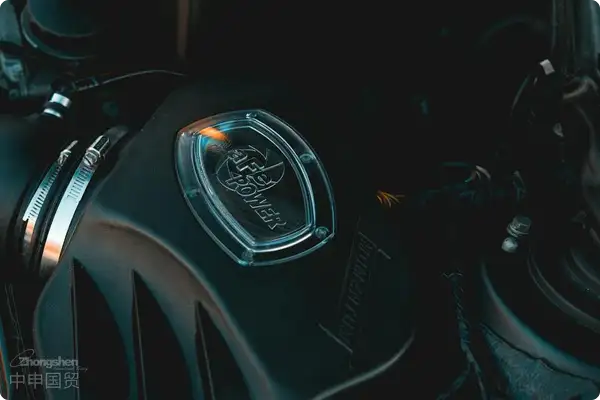- Shanghai Zhongshen International Trade Co., Ltd. - Two decades of trade agency expertise.
- Service Hotline: 139 1787 2118

Contents
ToggleII. Core Difficulties in Import Agency and Coping Strategies
With the continuous increase in global vehicle ownership andNew energyThe automotive technology is evolving, and as core components of engines, the import demand for valve-related parts is showing three major trends:
1.Technological upgrades drive imports.: The implementation of China VI/Euro VI emission standards has driven the import of precision valve components, with domestic manufacturers experiencing a surge in procurement demand for new material accessories such as titanium alloys and ceramic coatings;
2.Supply chain regionalization restructuring: Original equipment manufacturer (OEM) parts from Europe and America (such as Eaton and Mahle) still dominate the high-end market share, while imports of mid-range products from emerging manufacturing bases in Southeast Asia (Thailand, Vietnam) are rapidly increasing;
3.Aftermarket boom: The global automotive aftermarket has surpassed $1.5 trillion, with the frequency of procurement for imported valve components (such as valve springs and valve guides) in the maintenance and replacement market increasing by over 30%.
II. Core Procedures and Compliance Points for Importing Valve Accessories
Phase 1: Preliminary Qualification and Product Access
- Importer qualification: Confirm that the enterprise possesses theimport and exportThe Power of Attorney Certificate, and some special accessories require an application for the Automatic Import License (if involving an ECU-controlled electronic valve system);
- Testing Standard: GOST R 52627 - 2006 (General Technical Requirements):
- EU Market: CE Certification (EN 1679-1:2023 Safety Standard for Engine Components)
- North American Market: DOT Certification (SAE J1810 Valve Assembly Test Specification)
- Chinese Market: GB/T 19055-2022 Technical Standard for Automotive Engine Valves
- : HS codes are determined based on product materials and functions, and comprehensive tax rates (including tariffs, DUTY, and CBP fees) are calculated.:
- Basic HS Code Reference: 8409.91 (Engine valves and similar parts), with an average import tariff of 6.5% and a VAT rate of 13%.
- Utilization of Free Trade Agreements: ASEAN (China-Thailand zero tariffs), RCEP (Japan's valve component tariffs decreasing to zero within 5 years)
Packaging requirements: Shockproof and moisture-proof treatment, outer boxes must be marked with FRAGILE labelsInternational LogisticsCustoms clearance operations
1.Trade term selection:
- We recommend the DDP (Delivered Duty Paid) model: The agent handles logistics, insurance, and customs clearance comprehensively, reducing the client's capital occupation;
- For bulk cargo, FOB+ is the preferred option.L/C: For orders exceeding 5,000 pieces, it is recommended to split the container (a 40HQ can load approximately 12,000 standard valves);
2.Key Document List: - It is recommended to verify through the following methods:(Form E/RCEP, etc.)
- Material Certification (AMS 4928 Titanium Alloy / SAE J775 Valve Spring Steel)
- Brand Authorization Letter (Prevention of Intellectual Property Disputes)
Phase 3: Domestic Distribution and After-Sales Tracking
- Bonded warehousing solution: For high-frequency procurement customers, it is recommended to use the bonded warehouse in the free trade zone (which can save 17% of working capital occupation);
- Quality Dispute Handling: Establish a 48-hour inspection mechanism upon arrival (focusing on testing valve stem hardness HRC 40-45 and sealing surface roughness Ra ≤ 0.8μm);
III. Common Issues and Solutions for Corporate Imports
Question 1: How to avoid customs audits caused by classification errors?
- Practical Case: A company mistakenly classified "sodium-cooled valves (HS 8409.91)" as "ordinary steel valves (HS 8483.40)," resulting in additional taxes and late fees totaling 270,000 yuan;
- Solution: Entrust a professional agent to conduct pre-classification (requires providing drawings, material reports, and working principle descriptions).
Question 2: Compatibility Dispute Between Imported Parts and Domestic Engines
- Technical Countermeasure: Require suppliers to provide a compatibility list (e.g., the Volkswagen EA888 Gen3 engine corresponds to a valve lift of 9.2mm ±0.05);
- Legal Protection: Add a "Technical Compliance Clause" to the procurement contract.
Question 3: The impact of exchange rate fluctuations on long-term orders
- Financial Instruments: It is recommended to adopt forward contracts.FX Settlement AgencyLock the exchange rate (current USD/CNY 6-month forward points +120BP);
- Cost optimization: Emerging production hubs like Turkey and India offer quotes 15%-20% lower than Germany.
IV. Five Key Indicators for Selecting Professional Agency Service Providers
1.Customs Clearance Error Rate: Industry benchmark level ≤0.3% (requires verification of the agent's AEO certification records from the past 3 years);
2.Technical document processing capability: Can you accurately translate the PPAP documents under the IATF 16949 system?
3.Emergency response speed: In case of port inspection, provide a complete set of compliant documentation within 2 hours;
4.Supply Chain Financial Support: Does the tax and advance payment credit line cover more than 150% of the single shipment value?
5.Industry Database:Agents with a parts parameter database for mainstream models (such as Toyota M20A, Mercedes-Benz M254) can reduce operational risks by 30%.
V. Risk Warning and Cost Control Strategies
- Quality Claim Contingency Plan: Purchase product quality insurance (with a premium rate of approximately 0.8‰, covering the logistics costs of returns);
- AEO mutual recognition benefits: Applying for AEO Advanced Certification can reduce the inspection rate from 5% to 0.9%;
- Optimization of logistics costsThe Middle East route adopts a sea-rail intermodal transport (Dubai-Chongqing), which is more cost-effective than pure...Maritime TransportationSave 8 days in lead time.
Conclusion
Against the backdrop of rising technical barriers and increasingly stringent trade compliance, selecting candidates with an automotive engineering background isImport RepresentationService providers will become the key to building a company's global supply chain competitiveness. It is recommended to establish a long-term agency cooperation mechanism, where tiered service rates can be secured through quarterly procurement volume commitments (a $1 million annual procurement volume could qualify for a 25% agency fee discount).
---: The data in this article is based on the 2023 General Administration of Customs reports, IHS Markit industry reports, and practical cases. Specific policies are subject to the latest regulations.
Related Recommendations
? 2025. All Rights Reserved. Shanghai ICP No. 2023007705-2  PSB Record: Shanghai No.31011502009912
PSB Record: Shanghai No.31011502009912









